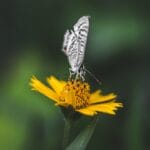Green succulents with small and roundish leaves have gained immense popularity among plant enthusiasts and interior decorators alike. These charming plants, characterized by their plump, fleshy leaves, are not only visually appealing but also remarkably resilient. Their ability to thrive in various environments makes them an ideal choice for both novice and experienced gardeners.
The allure of these succulents lies in their diverse shapes, sizes, and shades of green, which can add a refreshing touch to any space. The appeal of green succulents extends beyond their aesthetic qualities. They are often associated with low maintenance and adaptability, making them perfect for busy individuals or those who may not have a green thumb.
With a wide range of varieties available, these plants can fit into any decor style, from minimalist to bohemian. As we delve deeper into the characteristics, care, and creative uses of these delightful plants, it becomes clear why they have captured the hearts of so many.
Key Takeaways
- Green succulents with small and roundish leaves are a popular choice for indoor and outdoor gardens due to their unique appearance and low maintenance requirements.
- These succulents are characterized by their compact size, thick leaves, and ability to store water, making them well-suited for dry and arid environments.
- Popular varieties of green succulents with small and roundish leaves include Echeveria, Haworthia, and Sedum, each with its own distinct shape and color variations.
- Care and maintenance tips for these succulents include providing well-draining soil, ample sunlight, and minimal watering to prevent root rot and overhydration.
- Propagation methods for green succulents with small and roundish leaves include leaf cuttings, offsets, and division, allowing for easy and cost-effective expansion of your succulent collection.
Characteristics of Green Succulents with Small and Roundish Leaves
Green succulents with small and roundish leaves are a unique breed of plants that set themselves apart from others with their distinct characteristics. Adaptation for Survival
One of the most notable features of these succulents is their leaf structure. The leaves are typically thick and fleshy, designed to store water, which allows these plants to survive in arid conditions. This adaptation is crucial for their survival in environments where water may be scarce.
Physical Attributes and Growth Habits
The roundish shape of the leaves not only contributes to their aesthetic appeal but also maximizes surface area for photosynthesis while minimizing water loss. In addition to their physical attributes, these succulents often display a variety of growth habits. Some may grow upright, while others may spread out or trail downwards.
Versatility and Beauty
This versatility allows them to be used in various settings, whether as standalone specimens or as part of a larger arrangement. Furthermore, many green succulents produce small flowers that can add an extra layer of beauty when they bloom, although the primary attraction remains their lush foliage. The combination of these characteristics makes them a favorite among collectors and decorators.
Popular Varieties of Green Succulents with Small and Roundish Leaves

Among the myriad of green succulents with small and roundish leaves, several varieties stand out due to their unique features and ease of care. One such example is the “Jade Plant” (Crassula ovata), known for its thick, glossy leaves that resemble small coins. This succulent is not only visually striking but also symbolizes good luck and prosperity in many cultures.
Jade plants can grow quite large over time, making them an impressive addition to any indoor garden. Another popular variety is the “Panda Plant” (Kalanchoe tomentosa), which features fuzzy, round leaves with distinctive brown edges. This succulent is particularly appealing for its soft texture and compact growth habit, making it suitable for small spaces or as part of a mixed succulent arrangement.
Additionally, the “String of Buttons” (Crassula perforata) showcases stacked, round leaves that create a cascading effect when allowed to trail over the edges of pots or hanging planters. Each of these varieties brings its own charm and character, contributing to the overall diversity within this category of succulents.
Care and Maintenance Tips for Green Succulents with Small and Roundish Leaves
| Tip | Description |
|---|---|
| 1 | Water sparingly, allowing the soil to dry out completely between waterings. |
| 2 | Place the succulent in a location with bright, indirect sunlight. |
| 3 | Use well-draining soil to prevent waterlogging and root rot. |
| 4 | Avoid misting the leaves, as this can lead to rot and fungal issues. |
| 5 | Monitor for pests such as mealybugs and scale, and treat promptly if found. |
Caring for green succulents with small and roundish leaves requires an understanding of their specific needs to ensure they thrive. One fundamental aspect is light exposure; these plants generally prefer bright, indirect sunlight. Placing them near a window where they can receive filtered light is ideal.
However, direct sunlight can scorch their leaves, so it’s essential to find a balance that allows for healthy growth without causing damage. Watering practices are equally crucial in maintaining the health of these succulents. Due to their ability to store water in their leaves, they do not require frequent watering.
A common rule of thumb is to allow the soil to dry out completely between waterings. Overwatering can lead to root rot, a common issue that affects succulents. When watering, it’s best to soak the soil thoroughly and then let it drain completely.
Additionally, using well-draining soil specifically formulated for succulents can help prevent excess moisture retention.
Propagation Methods for Green Succulents with Small and Roundish Leaves
Propagation is an exciting aspect of growing green succulents with small and roundish leaves, as it allows enthusiasts to expand their collection or share plants with friends. One of the most common methods is leaf propagation, which involves taking a healthy leaf from the parent plant and allowing it to callous over before placing it on well-draining soil. After a few weeks, roots will begin to develop from the base of the leaf, eventually leading to new plant growth.
Another effective propagation technique is stem cuttings. This method involves cutting a healthy stem just below a leaf node and allowing it to dry out for a few days until a callous forms on the cut end. Once prepared, the cutting can be placed in soil where it will root over time.
Both methods are relatively simple and can yield multiple new plants from just one parent specimen, making propagation an enjoyable and rewarding process for succulent lovers.
Common Pests and Diseases Affecting Green Succulents with Small and Roundish Leaves

Common Pests Affecting Green Succulents
Despite their hardiness, green succulents with small and roundish leaves are not entirely immune to pests and diseases. Common pests include mealybugs, aphids, and spider mites, which can cause significant damage if left unchecked. Mealybugs are particularly notorious for infesting succulent plants; they appear as small white cottony masses on the leaves and stems.
Early Detection and Prevention
Regularly inspecting plants for signs of infestation is crucial for early detection. This proactive approach can help prevent the spread of pests and diseases, ensuring the overall health and well-being of your succulents.
Root Rot: A Common Disease Affecting Succulents
In terms of diseases, root rot is one of the most prevalent issues affecting succulents due to overwatering or poorly draining soil. Symptoms include yellowing leaves, mushy stems, and an unpleasant odor emanating from the soil.
Treating Root Rot and Preventing Future Occurrences
To combat root rot, it’s essential to ensure proper watering practices and use appropriate soil mixtures. If root rot occurs, removing the affected plant from its pot and trimming away any rotten roots can help save the healthy portions before repotting in fresh soil.
Creative Uses for Green Succulents with Small and Roundish Leaves in Home Decor
The versatility of green succulents with small and roundish leaves lends itself beautifully to various creative uses in home decor. One popular trend is incorporating these plants into terrariums—glass containers that create miniature ecosystems. The compact size of many green succulents makes them ideal candidates for terrarium arrangements, where they can thrive alongside decorative stones and other small plants.
Another innovative way to showcase these succulents is through vertical gardens or living walls. By mounting planters on walls or using wall-mounted frames filled with soil, homeowners can create stunning displays that bring life to otherwise dull spaces. The roundish leaves add texture and visual interest while requiring minimal maintenance compared to traditional houseplants.
Additionally, using these succulents in centerpieces or as accents on shelves can enhance any room’s aesthetic while promoting a sense of tranquility.
Conclusion and Final Thoughts on Green Succulents with Small and Roundish Leaves
Green succulents with small and roundish leaves represent a delightful intersection of beauty and practicality in the world of indoor gardening. Their unique characteristics make them appealing choices for various decor styles while offering low-maintenance care requirements that suit busy lifestyles. With numerous popular varieties available, each bringing its own charm, these plants have become staples in homes around the globe.
As we explore their care needs, propagation methods, potential pests, and creative uses in decor, it becomes evident that green succulents are more than just decorative elements; they are living pieces of art that contribute positively to our environments. Whether you are a seasoned gardener or just starting your journey into the world of plants, incorporating these charming succulents into your life can bring joy and beauty into your home.
If you’re interested in learning more about unique desert plants, you might find the article on the Joshua Tree quite fascinating. The Joshua Tree, known for its distinctive shape and resilience in harsh desert climates, is a remarkable example of the adaptability of succulent plants. You can read more about this iconic Mojave Desert plant and its ecological significance in the detailed profile provided here: Joshua Tree – Mojave Desert Plant Profile. This article offers insights into its habitat, characteristics, and the challenges it faces in its natural environment.
FAQs
What is the name of the small green succulent with roundish pointed leaves?
The small green succulent with roundish pointed leaves is commonly known as the “Jade Plant” or “Crassula ovata.”
What are the characteristics of the small green succulent with roundish pointed leaves?
The Jade Plant has small, roundish, and pointed leaves that are a vibrant green color. It is a slow-growing succulent that can reach up to 3 feet in height.
How should the small green succulent with roundish pointed leaves be cared for?
The Jade Plant requires well-draining soil and plenty of sunlight. It should be watered sparingly, allowing the soil to dry out between waterings. It is also important to protect the plant from frost and cold temperatures.
What are the common uses of the small green succulent with roundish pointed leaves?
The Jade Plant is often used as a decorative houseplant or as part of a succulent garden. It is also believed to bring good luck and prosperity in some cultures.
Are there any special considerations for propagating the small green succulent with roundish pointed leaves?
The Jade Plant can be easily propagated from stem or leaf cuttings. It is important to allow the cuttings to callus over before planting them in soil, and to provide them with the appropriate care and conditions for successful rooting.


